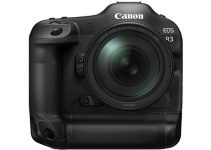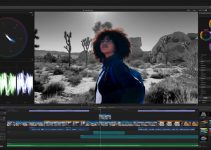Flying a drone is a lot of fun, and there’s no denying the great footage you can get with one. From smooth and buttery tracking shots to orbiting shots, or even following a subject from a bird’s eye view, drone footage can really add production value.
But when just starting out with a new drone, there are a lot of mistakes that novice pilots make that could cause lackluster footage, losing the drone in a crash, or even hurt yourself or others. Here’s a list of the most common mistakes just starting out, according to YouTube Aerial Cinematographers Jeven Dovey and Jake Sloan.
- No Jerky Movements. Planning out your shot movement will keep your footage smooth, as opposed to jerking the drone around and making the video look amateurish.
- Also setting the shutter speed, ISO, and set white balance away from Auto will help make the footage more cinematic.
- Try not to shoot in heavy wind. The drone can handle the wind just fine, but as the wind pushes the drone around, it makes the footage look bouncy and jerky, and therefore, unusable.
- Taking off in dusty environments. This not only gets dust in the motors, but it can also make your camera lens dusty and therefore, ruin your footage. One way around this is to get a drone landing mat to take off and land from.
- Not updating your home point. If you’re a vehicle that’s moving or walking, the home point will be set where the drone took off. If you move locations while the drone is in flight, the drone’s home point will have to be reset in the app before it returns home.
- Flying sideways. There is no side obstacle avoidance in most drones, and as such, flying sideways can easily cause the drone to run into obstacles.
- Sport mode. Remember also, that flying in sport mode turns off the obstacle avoidance sensors, therefore making the drone vulnerable to hitting an obstacle if you forget to turn them back on.
- Thinking the drone is a toy. Some view it as a toy, but those propellers can do damage, especially if it hits another aircraft.
- Flying out of the line of sight. The FAA mandates that all drones be kept within line of sight when flying. And if your battery life starts to die, and you’re out of the line of sight, the drone may not make it back.
- Forgetting to recharge your battery before flying. Always make sure your battery is charged up before you go flying. Otherwise, your battery charge may be limited.
- Flying indoors. A lot of new pilots want to fly to practice, but flying indoors limits control. The GPS may not lock on, causing the drone to drift and that could then run into something indoors, destroying the drone.
- Not finding a big open space that’s obstacle-free. When you’re first getting comfortable flying your drone, it helps to be in a wide-open space to practice with it, free from the worry of running into something. This could be a field or a large backyard. But the key is to have no obstacles like trees or powerlines which could get in the way while you’re getting used to the drone. And as you practice, make really slow, small, basic movements. This will give you the confidence to fly as you learn how the drone handles.
- Not understanding your drone, the app, and the controller. The drone controller app has a lot of information, which can overload a beginner if they aren’t familiar with how the drone app manages that data. So study up.
- Flying too far away when the wind picks up. When you take off and fly away, it helps to have a cushion of battery life, should a headwind start causing the drone to take longer to return.
- Not getting a wider variety of shots. Big landscapes are great, but they can get boring if that’s all you capture. So get some variety. Go high straight down. Do an orbit. Get down on the ground. Do at least five shots that are completely different from one another, and you’ll have a nice and interesting sequence.
- Flying over reflective surfaces. The downward sensors may not work properly because they can’t measure the distance between the drone and the water. This could cause the drone to crash, resulting in a loss of the drone.
- Sensors don’t detect everything. Powerlines, smaller branches, and other small objects may not be picked up by the obstacle avoidance sensors.
- Tracking Yourself. The obstacle avoidance sensors may not work properly if you’re tracking yourself. So it’s important to understand that being in a location that has a lot of obstacles may cause the drone to run into something while tracking. To understand the limitations before you pick a crowded area to track in.
- Flying too close to wildlife. There’s a possibility that wildlife will go after the drone, not only damaging your UAV but perhaps harming the animal.
- Losing your control sticks. The sticks are tiny and can be easy to lose. There is a handy storage area on the back, but be mindful of how easy they are to lose. Also, your propellers are made of plastic and can get broken or damaged easily. So always bring along an extra set.
- Not checking your propellers. Always check your propellers as part of your preflight check. They may have a crack, and if it breaks, the drone will crash. Always have a backup set.
- Not knowing your stopping distance. Depending on how fast you’re flying, the drone may require more distance to stop. Keep that in mind.
- Have a properly formatted memory card. Make sure they are completely empty. Also, use a large card, like 128GB. And bring an extra. Nothing kills a cinema session like having a corrupted card and no backup to keep shooting.
- Not having memory cards that are fast enough. When you’re shooting at higher resolutions, it’s key to use a card that is fast enough to keep up with the amount of data the drone is trying to write to it. DJI has a light of recommended cards on their website in the specs for each model.
- Not understanding different speed modes. There are usually three modes – Sport Mode, Normal mode, and Cinema Mode. The obstacle sensor function differently in each mode, from completely off in sport mode, to flying slow and steady in cinema mode. Understanding how the drone behaves in each mode will keep it from crashing or getting terrible footage.
- Understanding ND filters. Don’t worry about these when just starting out, but once you are familiar with it and how the footage looks, adding an ND filter will make your videos look that much better.
- Not letting your drone set a home point. Set your home point before your take off and fly. If you forget, the drone may not remember where to return to. By letting the drone connect to the GPS before flying, it will set the home point and come back to you.
- Update your drone before you fly. There’s nothing worse than having the drone needing an update when you’re out in the field, but you don’t have a strong enough connection to do it.
Here are two more that I learned, the hard way:
- Check the weather before you fly. It’s important to check the weather before you fly into a particular area. And not only regular weather, but space weather. If the sun is very active on a particular day, a solar flare could cause the drone to lose its GPS lock and literally fly away from you. DJI has done a lot to improve this, but it can happen. There are plenty of official and third-party apps which can help with this. From the FAA’s B4YouFly to AirMap, UAV Forecast, and Aloft.
- Be familiar with your local regulations. The FAA has regulations, but your state, county, or even your city may have even more restrictive regs you’ll need to be aware of. Otherwise, you could get fined for flying in an unauthorized local area, even if you’re following FAA rules to the letter.
[source: Deven Jovey]
Order Links:
- DJI Mavic 3 (B&H)
Disclaimer: As an Amazon Associate partner and participant in B&H and Adorama Affiliate programmes, we earn a small comission from each purchase made through the affiliate links listed above at no additional cost to you.



